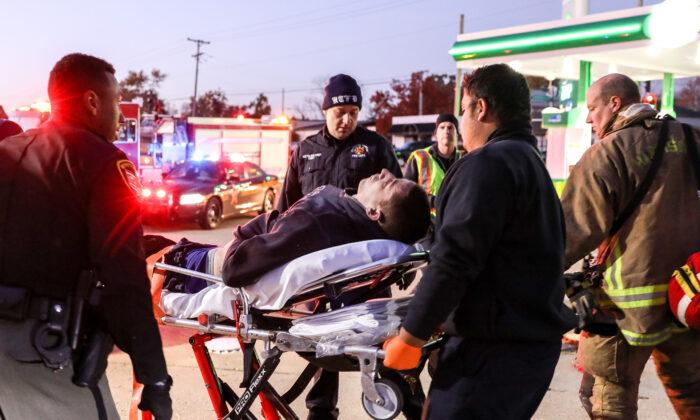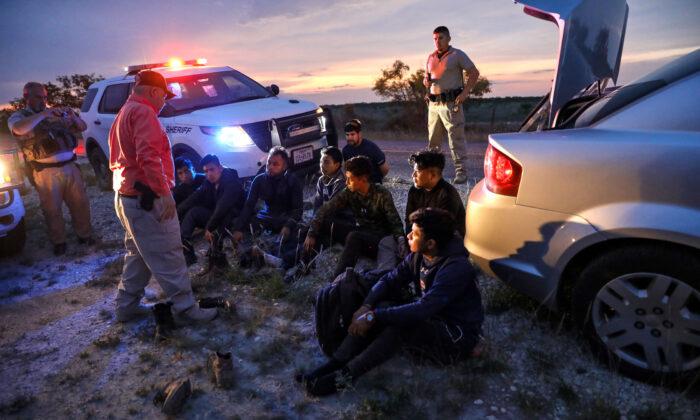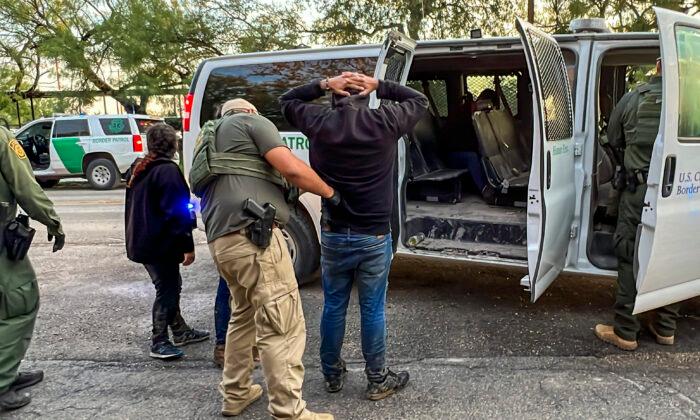DAYTON, Ohio—Jails around the country are facing a barrage of issues.
Almost all inmates are in for drug or alcohol-related crimes; more than one-third have a diagnosed mental illness; the number of state mental health beds has plummeted; inmate numbers have skyrocketed; and many jails have faced budget cuts.
The most pressing issue isn’t new; it has been steadily growing, but the opioid crisis has helped thrust it to the forefront. It’s mental illness.
On any given day, there are about 750,000 people in jails across America.
“Every jail in our country, somewhere in the neighborhood of 30 to 40 percent of the people ... are diagnosed mentally ill,” said National Sheriffs’ Association president Sheriff Daron Hall of Davidson County, Tennessee.
Adding in the number of inmates addicted to drugs, the proportion shoots to at least 90 percent, Hall said. Drug addiction and mental health-related issues are often coexisting and it’s difficult to parse out which is driving which.
“The jail is the largest mental health institution in any community,” he said. “And that’s just bad. It’s bad for everyone. Jails aren’t good places to try to treat something as complicated as mental illness.”
Hall said the deinstitutionalization of mental health hospitals that started in the 1960s hasn’t worked and instead has sparked today’s problem.
Changing the Approach
Three years ago, Montgomery County in southwest Ohio was overwhelmed by so many opioid overdoses that the local coroner was forced to hire portable freezer units to store all the bodies.Sheriff’s deputies raced from overdose to overdose. The jail, packed with addicts, operated as a proxy opioid-withdrawal center and mental health catch-all unit.
“It kind of went backwards,” said Montgomery County Sheriff Rob Streck. “It would have been nice to hit the mental health first before we hit on the addiction, but we were losing too many people to deal with it that way.”
Drug overdose deaths are now down from the peak in 2017. Montgomery County, with a population of a little over half a million people, had 566 overdose deaths in 2017—one of the highest per-capita overdose death rates in the nation. But in 2019, that number had almost halved to 290 deaths.
The jail, which was a revolving door of arrest, release, arrest, release during the height of the crisis, has now become somewhat of a bastion of hope for addicts.
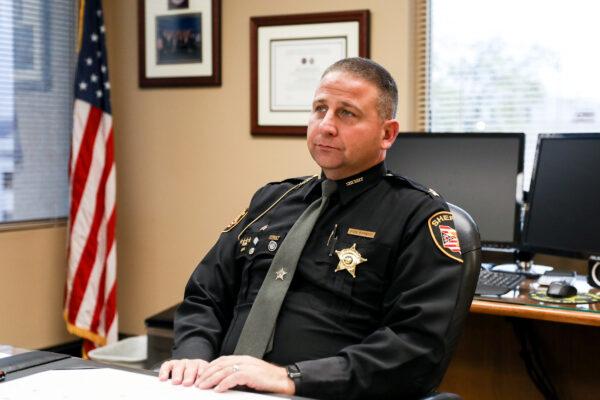
The real change began in the midst of the crisis, when Teresa Russell was hired as the jail’s treatment coordinator. By April 2018, Russell had made available medication-assisted treatments, such as Vivitrol and Suboxone, which block the effect of opioids and help control cravings.
Many inmates now leave the jail equipped with robust, personalized discharge plans and direct links to community programs that help with issues such as housing, drug rehab, insurance, and jobs.
“How you used to leave the jail three years ago and how you leave the jail now is a total turnaround,” Streck said. “We know it’s changing some lives.”
In years past, inmates would simply be called over to the release counter, receive their belongings, and leave, Streck said.
“We didn’t care where you went. We didn’t care how you were getting there. What medicine you were going to take with you—even if you had medicine you were taking inside,” he said.
Nowhere To Go
In Dayton, the county seat of Montgomery, mental health facilities have been losing money for years and, consequently, closing.At the end of 2017, Day-Mont Behavioral Health Care closed. It provided mental health treatment for more than 600 people on Dayton’s west side.
In July 2018, Good Samaritan Hospital closed. It had 60 beds in a locked behavioral unit and was also located in the low socio-economic area of west Dayton.
“There’s just nowhere good right now to get somebody,” Streck said, “and then they end up self-medicating.”
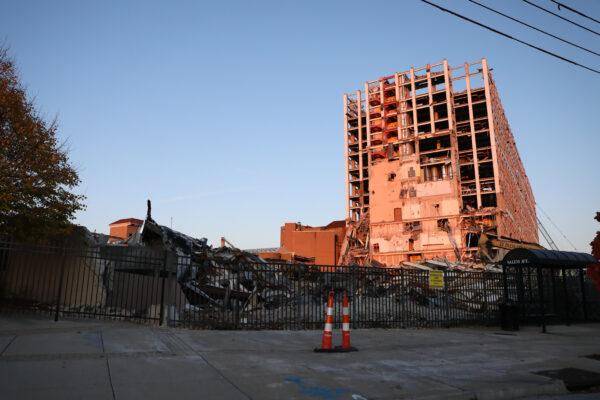
Montgomery County sheriff’s deputy Matt McIntosh said trespassing is the most common charge for the people he arrests who are likely mentally ill.
For example, a business owner will call 911 to report a disturbance. “They can’t have these people sitting there harassing, yelling at every customer that comes in,” McIntosh said. So, the deputy arrests these people and takes them to jail, because there’s no other option. “It’s a crappy situation for everybody.”
Hall said most modern countries would identify such a person as having a problem that needs help.
“Our country sees it as, we need to take him to jail because it’s a violation, there’s something criminal about it. The reason we do that is there aren’t alternatives,” he said. “We are the stabilization unit right now.”
Two years ago, it was hoped that the Greater Dayton Area Hospital Association would have a crisis stabilization unit up and running, but it still hasn’t been built.
Overdoses Undercounted
Nationally, the number of drug overdose deaths in 2018 showed a decrease for the first time in almost 30 years, according to provisional data from the Centers for Disease Control and Prevention.Even so, deaths related to opioids are “grossly underestimated,” according to Scott Weiner, assistant professor at Harvard Medical School and author of a study on overdoses.
The number of people who overdose and survive is also impossible to discern. The opioid-blocker Narcan is now widely available, and many people won’t bother calling 911 if they can revive the person themselves, Streck said.
“We don’t even know most of the overdoses going on at this point,” he said.
When they do call, deputies don’t log it as an overdose if it’s evident the person was revived before they arrive, McIntosh said. In these cases, the deputies can’t prove that they overdosed.
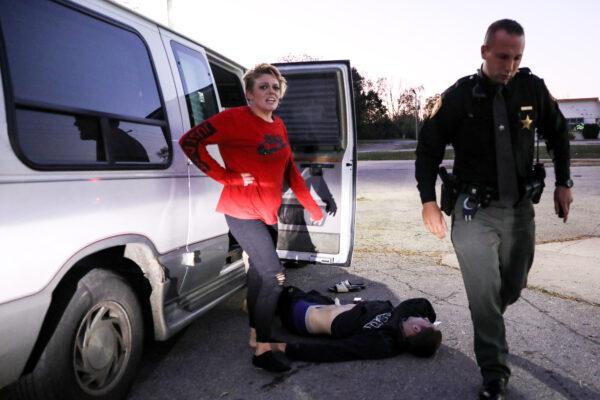
On average, Montgomery County deputies respond to a couple of overdoses per shift.
On Nov. 1, 2019, McIntosh responded to a 911 call of a suspected opioid overdose at a gas station parking area.
Upon arrival, he found a young man lying unconscious on the asphalt next to the open door of an old white van. He was pale and his breathing was labored. An agitated woman, likely hopped up on meth, was screaming for help, while another looked on, crying. The driver had parked the van and run off when the man started overdosing.
As McIntosh was piecing together what happened, Harrison Township Fire Department officers arrived. They loaded the man into their ambulance and administered 2 milligrams of Narcan, which revived him immediately.
Deputies searched the van and found a meth pipe, a small bag of suspected crystal meth, and three capsules of suspected fentanyl or heroin-fentanyl mix.
Patrolling Dayton
As McIntosh continued to patrol the streets, he pointed out several locations of recent fatal shootings in Fort McKinley, Dayton.“They call this mini Detroit,” he said.
On most of his night shifts, McIntosh takes at least one illegal gun off the street.
“The guns are the biggest thing. That’s what we look for the hardest—more than the dope,” he said.
When he’s not responding to 911 calls, McIntosh will trawl the streets where known meth-dealers live.
“I hit our meth houses to see if there’s any new cars there. I know who’s supposed to be there, who’s not supposed to be there,” he said.
If he sees an out-of-place vehicle, he’ll follow it and conduct a vehicle stop. He needs probable cause to stop the vehicle and permission to search it, but most people comply.
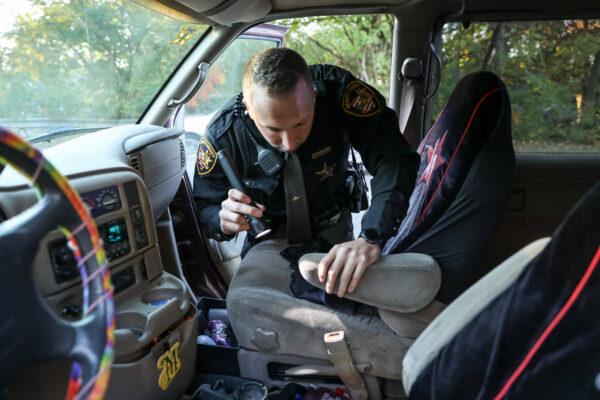
Other times, he stumbles upon trouble by chance.
“We almost had to shoot somebody the other night,” he said.
McIntosh said he and his partner were following up on a 911 hangup call in Harrison Township, which ended up being nothing.
“Then across the street, we heard this dude yelling at these people on the sidewalk. It was real dark out. I’m like, ‘What’s in his hand?’ And we start walking across the street and I shine my light on him and he has a shotgun pointed at these people.
“So we were like, ‘Hey, drop the gun.’
“And he looks at us, he says, ‘[expletive] you.’
“I’m thinking: ‘I’m gonna have to shoot this guy.’
“Then he ran and put the gun in his car real quick and came out with his hands up.”
McIntosh never knows what he’ll encounter and has to be prepared for anything.
Dayton, and its local law enforcement officers, have endured a tough few years.
On top of being one of the hardest-hit areas for drug overdoses in the country, a tornado ripped through the county at the end of May 2019, killing one person and damaging at least 500 homes. The faded blue tarps flapping on roofs and the boarded-up abandoned houses are a reminder of the destruction six months later.
Dayton was also the site of a mass shooting on Aug. 4, 2019. Outside a bar, 24-year-old Connor Betts shot and killed nine people and injured 27 others, before being shot by police.
The local coroner determined that Betts had cocaine, Xanax, and alcohol in his system.

The Rise of Fentanyl
About 75 percent of all drug overdoses are opioid-related, including prescription pills, heroin, and fentanyl.Drug cartels are now mixing fentanyl into everything, including counterfeit pain pills, which are manufactured to look like oxycodone. A user may not know the pill contains fentanyl, increasing the risk of addiction or death.
Fentanyl is a synthetic opioid originally developed as a painkiller and anesthetic. It’s 50 to 100 times more potent than heroin and as little as two milligrams can be a lethal dose.
Illicit fentanyl is primarily sourced from China and Mexico, according to a 2018 report by the Drug Enforcement Administration (DEA). High-purity fentanyl is often sold online and mailed directly from China to consumers in the United States through the postal system. Other times it is bulk-shipped to Mexico.
In August 2019, the Mexican navy intercepted a 25-ton shipload of fentanyl originating from China and bound for Culiacán, Sinaloa—the home base of the Sinaloa cartel in Mexico.
Before 2015, no fentanyl had been seized by Customs and Border Protection (CBP) at the U.S–Mexico border, but the amount has risen steeply over the years since.
In fiscal 2019, border agents seized 2,545 pounds of fentanyl at ports of entry, including a record-breaking seizure in January 2019.
CBP officers at the Nogales, Arizona, port of entry discovered nearly 254 pounds of fentanyl with a value of approximately $3.5 million and almost 395 pounds of methamphetamine valued at $1.1 million.
Smugglers concealed 400 packages of drugs within a special floor compartment of a trailer laden with cucumbers, CBP said.

In Dayton, Ohio, fentanyl is both cheap and omnipresent.
Judging by the amount seized by law enforcement in Montgomery County, plenty is making its way up from the southern border undetected.
In 2019, officers seized 94 pounds of fentanyl, along with 26 pounds of heroin-fentanyl mix and about 2,500 opioid pain pills.
“There’s huge amounts. I mean, we just got 20 kilos [44 pounds] of fentanyl,” Sheriff Streck said, referring to a drug bust in October 2019.
“Eight years ago, if you got 20 keys of anything, you would have been nationwide news. Now we get that every couple of months.”
The DEA predicts fentanyl will continue flowing into the United States in large quantities, as it’s cheaper and easier to produce than heroin.
The Rise of Meth
Streck said the Sinaloa cartel has directly driven the proliferation of methamphetamine in his county.“We knew a couple of years ago that was going to be the trend,” he said. “Because when our task forces would arrest somebody, they’d start telling us that the cartel said, ‘You can have a [kilo] of fentanyl, but you got to have six pounds of meth—and don’t bring the meth back to us.’”
He said there is less heroin on the streets now, but fentanyl, meth, and cocaine are all plentiful. Fentanyl is even mixed into the meth and cocaine, he said.
Almost all meth in the United States comes from Mexico, unlike in the mid-2000s when homegrown labs were ubiquitous.
In fiscal 2019, CBP seized more than 68,000 pounds of meth at ports of entry along the U.S.–Mexico border. That’s up from less than 20,000 pounds in fiscal 2014.
Although meth isn’t killing its users as easily and quickly as opioids, as a psychostimulant, it brings its own challenges.
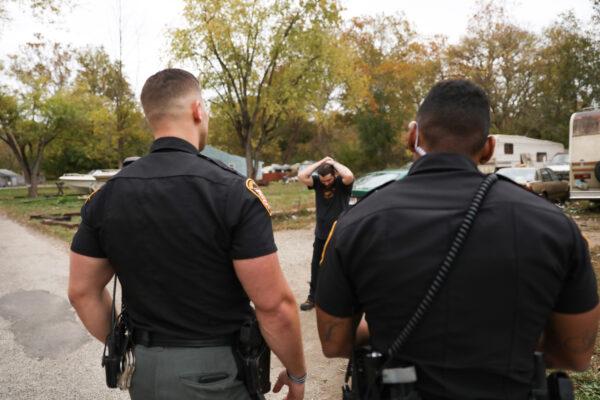
On Nov. 1, 2019, the 911 dispatcher in Montgomery County relayed a call that a man wielding a knife was on the road, yelling and acting crazy.
McIntosh and several other deputies responded; a couple with tasers at the ready. The man didn’t have a knife, but McIntosh said he was acting as if he’d taken meth. McIntosh knew the man and said he was usually calm, but guessed the drugs would render him insane for a couple of days before they left his system.
There was nothing they could do and nowhere to take him, so after talking to him briefly, the deputies left.
Deputies are finding that, unlike opioids, which generally make people passive, meth users can be aggressive and sometimes physically attack officers.
Meth is also causing psychotic breaks in users, according to Russell.
In working with addicted inmates in the county jail, she’s seen a change in how is meth affecting them. Three years ago, as meth users detoxed over several days, the psychosis would go away, she said.
She said according to the medical director at the local department of mental health, the chemicals now used in meth are flipping switches in the brain “that aren’t really flipping back.”
“So people can detox now, [and] sometimes we see they’re completely detoxed, but that psychosis doesn’t leave,” she said.
Meth has traditionally been made with ingredients such as over-the-counter ephedrine tablets, lithium batteries, camp fluid, and fluid from cold packs. Now, ingredients such as wasp spray are being added, which greatly increases potency.
Russell said she’s working with public health and hospitals to figure out how to treat the psychosis under the complicated rules for treatment, classification, and insurance.
“There’s medical necessity when it comes to billing for medical services,” she said. “So do you treat somebody who’s experiencing psychosis as a mental health patient? Or is this because it’s a substance-induced issue? Well, what if the substances have now left the body and you’re still showing psychosis?”
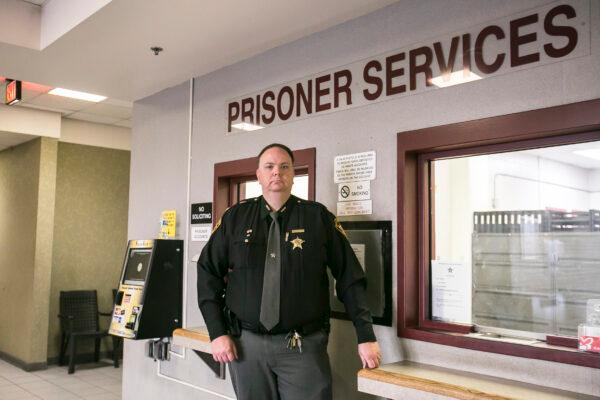
Support Services
The focus now is to address the underlying mental health issues as best a jail can, on top of the addiction treatment and stabilization efforts.But often, it’s a race against time. Jails are designed to hold people while they’re awaiting trial, or, if they’re sentenced, for up to a year. In Montgomery County, the majority of inmates are in for between six and 20 days.
Russell found that strong discharge plans and good relationships with community providers were the key to real change.
“If you’re not holding this person’s hand through the process of getting them there and getting them signed up and into services, the likelihood that they’re going to come back is pretty high,” Russell said. “And sure enough, that’s exactly what we saw.”
Now, three discharge planners divvy up the list of newly sentenced inmates every Monday and find out their needs. They check on the inmate’s insurance status, housing status, medications, and any assessments they’ve had recently.
Then, when the discharge planner asks the inmate what they need and the inmate says, “Nothing,” the planner can remind them that they came in homeless and might need help with housing, for example.
“Where are you going to live? Where are you going to go? Who is your primary care doctor that will continue your blood pressure medication? Do you need a referral to that? Did you know that your insurance has lapsed?” Russell said.
“They get that discharge plan and they sign it. They sign that they understand it.
“We are trying to close up all the holes. It’s not perfect because it’s a lot of people coming and going and we’re very limited in staffing for that. But there are a lot of people in the community who want to partner and help.”
Streck said federal judges from other parts of the country have moved inmates to his jail because of the work they’re doing.
